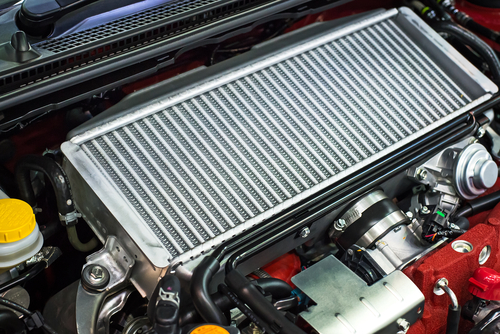If your car radiator has a minor leak you may be considering car radiator sealant. But what is this? And why can this be a good short term option?
What is car radiator sealant?
The car radiator is an essential component of a car’s cooling system, as this is responsible for cooling down the engine and preventing overheating. If there is a leak in the radiator, the coolant level will drop, leading to engine overheating problems, which can cause significant damage if left unchecked. This is where car radiator sealant comes in as an effective and affordable solution to fix the leak and prevent further damage. This is a type of liquid that is used to seal small leaks in the car’s radiator.
How does this work?
Car radiator sealant works by capping radiator leaks. The cooling system’s air, water, and metal surfaces interact with the liquid formula as it runs through them and this allows aluminum or copper particles in the sealant to attach to the radiator’s surface and create a strong, long-lasting seal. The particles can efficiently block the leak by filling in any tiny crevices and cracks in the radiator.
How versatile is car radiator sealant?
Car radiator sealant can be used in various types of radiators, including aluminum and plastic radiators. It is a versatile product that can fix leaks in different parts of the cooling system, such as the head gasket, water pump, and heater core.
Can this sealant be used easily?
Yes, using car radiator sealant is a relatively straightforward process. Once the leak has been located, and it is confirmed that this is only a small leak, the radiator should be drained and flushed. This is because any dirt or debris left in the system can interfere with the sealant’s effectiveness. The radiator should then be left to dry completely before adding the sealant.
The sealant will need to be applied directly to the radiator, either through the radiator cap or the coolant overflow tank. The recommended amount of sealant varies depending on the product and the size of the radiator, and as such, you will need to follow the instructions..
Once the sealant has been added, you should start the engine and let it run for at least 10-15 minutes to allow the sealant to circulate through the cooling system. The engine should then be turned off, and the radiator should be left to cool down. After the radiator has cooled down, the coolant level can be topped up and you can check for any leaks. In most cases, the sealant should effectively fix the leak, and the car can be driven without any issues.
Car radiator sealant is not a long term solution
While car radiator sealant is an affordable and effective solution for fixing small leaks in the radiator, it is not a long term solution. Instead, this sealant is a quick fix that can save car owners significant amounts of money in repair costs, but it should only be used as a temporary solution. You will need to seek professional help to avoid further damage to the car’s cooling system, and to potentially replace or fix the radiator if necessary.
For more information or for professional car radiator or auto air conditioning repair, get in touch with the team today, here at MRS Heat Transfer.

